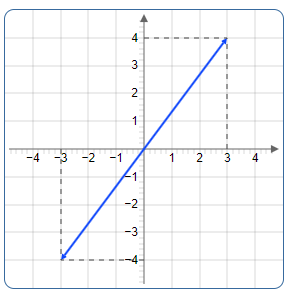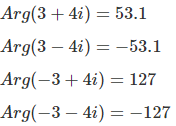Convert complex number to polar coordinates
Description of the polar form of complex numbers with examples
This article describes the determination of the polar coordinates of a complex number by calculating the angle \(φ\) and the length of the vector \(z\).
The radius r of the polar form is identical to the magnitude \(|z|\) of the complex number. The formula for calculating the radius is thus the same as that described in the article of the absolute value of a complex number.
For the length \(r\) of the vector results
If the vector is in the 1. or 2. quadrant, the angle \(φ\) applies
or
When calculating the angle, it must be taken into account in which quadrant the vector is located. Consider the following figure:
For the complex number \(3 + 4i\) in the picture above, the ,agnitude is
The angle is
For the complex numbe \(3 - 4i\) the magnitude is also
The calculation of the angle also gives \(53.1°\). In this case \(180°\) must be added to the calculated angle to get into the right quadrant.
After calculating the angle \(φ\) with the aid of the arc sine, a test of the quadrant must always be carried out. For a negative imaginary part, the angle must be corrected.
For a complex number \(a + bi\) applies
If

If

or
when calculated in radians.
In the calculations above, the angle between \(0°\) and \(360°\) is given as the angle \(φ\) to the real axis. The angle can also be specified between \(0°\) and \(± 180°\).
|
|







